Medición del flujo de calor de hidratación en pastas de cemento portland utilizando un calorímetro de diseño propio
DOI:
https://doi.org/10.38017/2390058X.788Palabras clave:
calorímetro, cemento, flujo de calor, hidrataciónResumen
Este trabajo de investigación se enfocó, en la medición de la variación en la temperatura y en el flujo de calor de pastas de cemento al ser hidratadas, mediante un calorímetro de diseño propio. Primero, se fabricó el calorímetro con el cual se realizaron las mediciones. Luego, se eligieron los volúmenes, con su respectivo diseño de mezcla, a los cuales se les efectúo la medición. Se utilizaron dos muestras, con volúmenes de 42 cm3 y 116 cm3, y, con una relación agua/cemento de 0.45. Seguidamente, se realizó la medición de temperatura durante la hidratación del cemento, para finalmente establecer mediante modelos térmicos y matemáticos, la evolución del flujo de calor. Cada medición duró aproximadamente 26 horas. Después de realizadas las mediciones, se encontró que, a diferentes volúmenes de muestra, la temperatura varía. De igual manera, se notó que, la disipación de calor ocurre de manera rápida debido al tamaño de la muestra.
Referencias bibliográficas
Abeka, H., Agyeman, S., & Adom-asamoah, M. (2017). Thermal effect of mass concrete structures in the tropics : Experimental , modelling and parametric studies. Cogent Engineering, 94(1), 1–18. https://doi.org/10.1080/23311916.2016.1278297
Alhozaimy, A., Fares, G., & Alawad, O. A. (2015). Heat of hydration of concrete containing powdered scoria rock as a natural pozzolanic material. Construction and Building Materials, 81, 113–119. https://doi.org/10.1016/j.conbuildmat.2015.02.011
ASTM Internacional. Standard Practice for Measuring Hydration Kinetics of Hydraulic Cementitious Mixtures Using Isothermal Calorimetry 1 (2009).
Boubekeur, T., Ezziane, K., & Kadri, E. (2017). Quantification and analysis of heat hydration of blended cement at different temperature. Journal of Adhesion Science and Technology, 4243(May), 16. https://doi.org/10.1080/01694243.2017.1325557
Cengel, Y. A. (2004). Transferencia de Calor (Segunda ed).
DANE. (2019). Boletín Técnico: Estadísticas de cemento gris (ECG). Bogotá D.C. Devore, J. L. (2008). Probabilidad y estadística para ingeniería y ciencias (Séptima Ed).
CENGAGE Learning.
Emo, C., & Solaro, R. (2003). Biodegradable polymers and plastics. Pisa.
Fernández Cánovas, M. (2013). HORMIGÓN (10th ed., pp. 53–57). Madrid, España.
ICONTEC. Cemento pórtland. Clasificación y nomenclatura, Pub. L. No. NTC 30, 2 (1996). Colombia.
Jansen, D., Goetz-neunhoeffer, F., Lothenbach, B., & Neubauer, J. (2012). The early hydration of Ordinary Portland Cement ( OPC ): An approach comparing measured heat fl ow with calculated heat fl ow from QXRD. Cement and Concrete Research, 42(1), 134–138. https://doi.org/10.1016/j.cemconres.2011.09.001
KSoftware. (2017). Realterm: Serial Terminal. Retrieved from https://realterm.sourceforge.io/
Lin, Y., & Chen, H. (2015). Thermal analysis and adiabatic calorimetry for early-age concrete members. Journal of Thermal Analysis and Calorimetry, 122(2), 937–945. https://doi.org/10.1007/s10973-015-4843-2
Lodewicus Schoeman, J. (2016). A model for temperature control in concrete dams.
Stellenbosch.
Martínez Bencardino, C. (2012). Estadística y muestreo (Décimo ter). Bogotá D.C: ECOE EDICIONES.
Maxim Integrated. (2018). DS18B20 Programmable Resolution 1-Wire Digital Thermometer.
Miretzky, B. (1946). Determinación del calor de hidratación de los cementos argentinos con calorímetro adiabático. Universidad de Buenos Aires.
Ramu, Y. K., Akhtar, I., & Santhanam, M. (2016). Use of adiabatic calorimetry for performance assessment of concretes. Advances in Cement Research, 28(8), 485–493. https://doi.org/http://dx.doi.org/10.1680/jadcr.15.00097
Riding, K. A., Poole, J. L., Folliard, K. J., Juenger, M. C. G., & Schindler, A. K. (2013).
Modeling Hydration of Cementitious Systems. ACI Materials.
Rivera, G. A. (2013). Concreto simple. Cauca.
Scrivener, K. L., & Nonat, A. (2011). Cement and Concrete Research Hydration of cementitious materials , present and future. Cement and Concrete Research, 41(7), 651–665. https://doi.org/10.1016/j.cemconres.2011.03.026
Sears Weston, F., & Salinger, G. L. (2007). Termodinámica, teoría cinpetica y termodináica estadística. (Editorial Reverte, Ed.) (Segunda Ed).
Springenschmid, R. (1998). AVOIDANCE OF THERMAL CRACKING IN CONCRETE
AT EARLY AGES. Materials and Structures, 30(October 1997), 451–464.
Tarasov, A. S., Kearsley, E. P., Kolomatskiy, A. S., & Mostert, H. F. (2010). Heat evolution due to cement hydration in foamed concrete. Magazine of Concrete Research, (March 2015), 895–906. https://doi.org/10.1680/macr.2010.62.12.895
The global cement report. (2018) (12th ed.). International Cement Review’s.
Triola, M. F. (2013). Estadística (Decimoprim). México: PEARSON EDUCACIÓN S.A.
Volfová, P., Cern, R., Tydlitát, V., & Zákoutsk, J. (2012). Hydration heat development in blended cements containing fine-ground ceramics. Thermochimica Acta, 543, 125– 129. https://doi.org/10.1016/j.tca.2012.05.022
Wang, K., Ge, Z., Grove, J., Ruiz, M. J., & Rasmussen, R. (2006). Developing a Simple and Rapid Test for Monitoring the Heat Evolution of Concrete Mixtures for Both Laboratory and Field Applications.
Cómo citar
Descargas
Descargas
Publicado
Número
Sección
Licencia
Derechos de autor 2023 Revista Ciencia, Innovación y Tecnología

Esta obra está bajo una licencia internacional Creative Commons Atribución-NoComercial-CompartirIgual 4.0.



